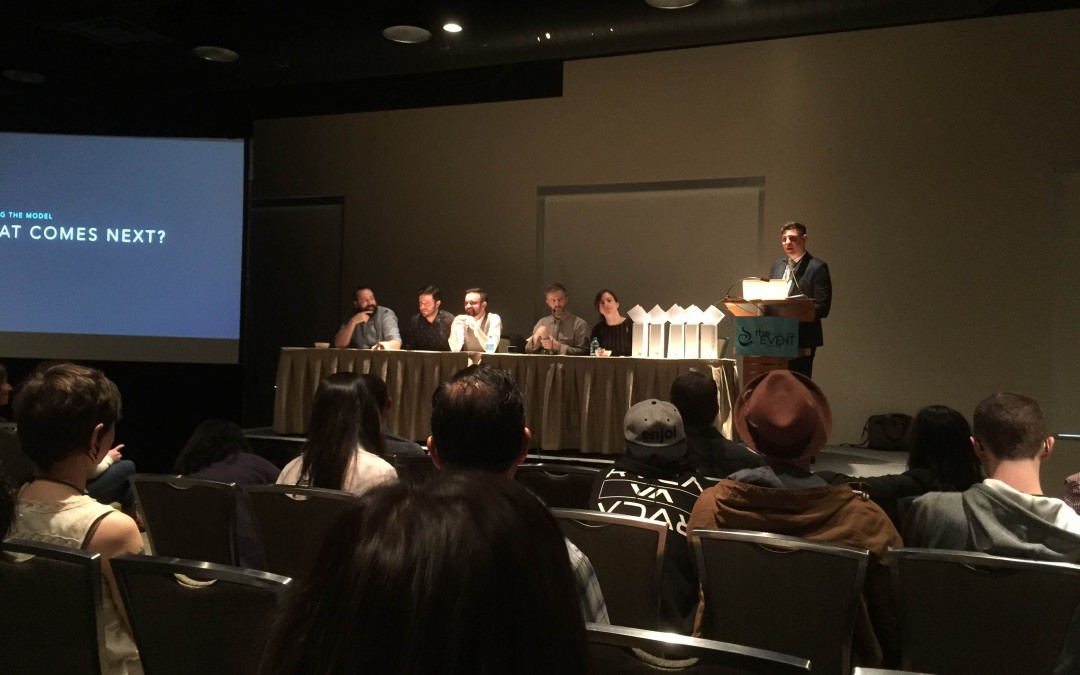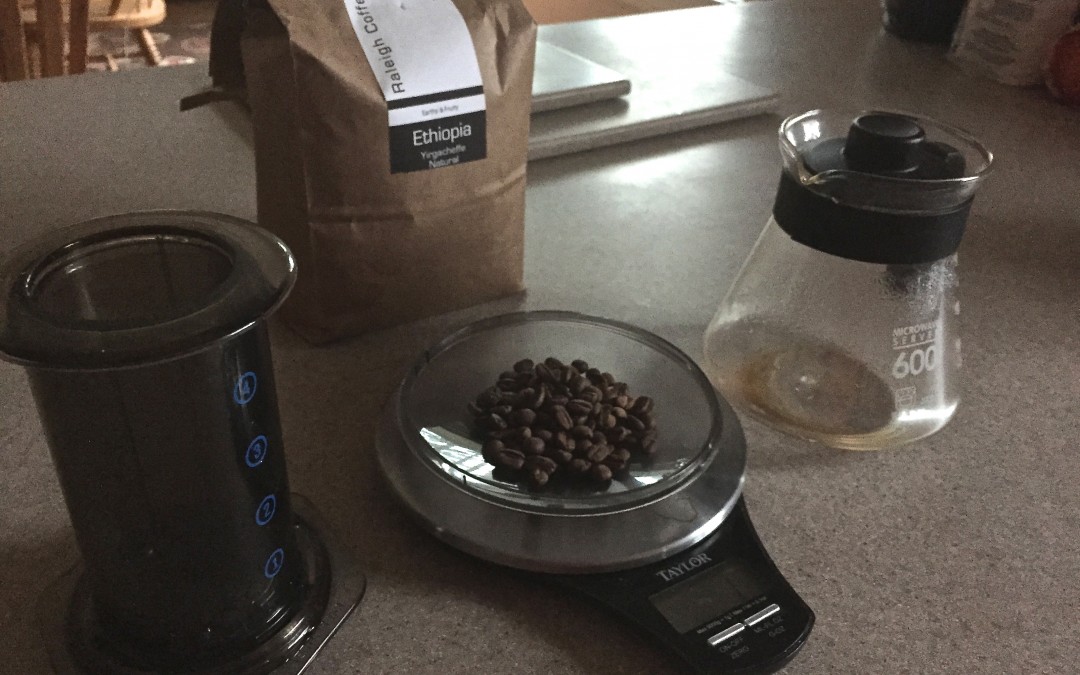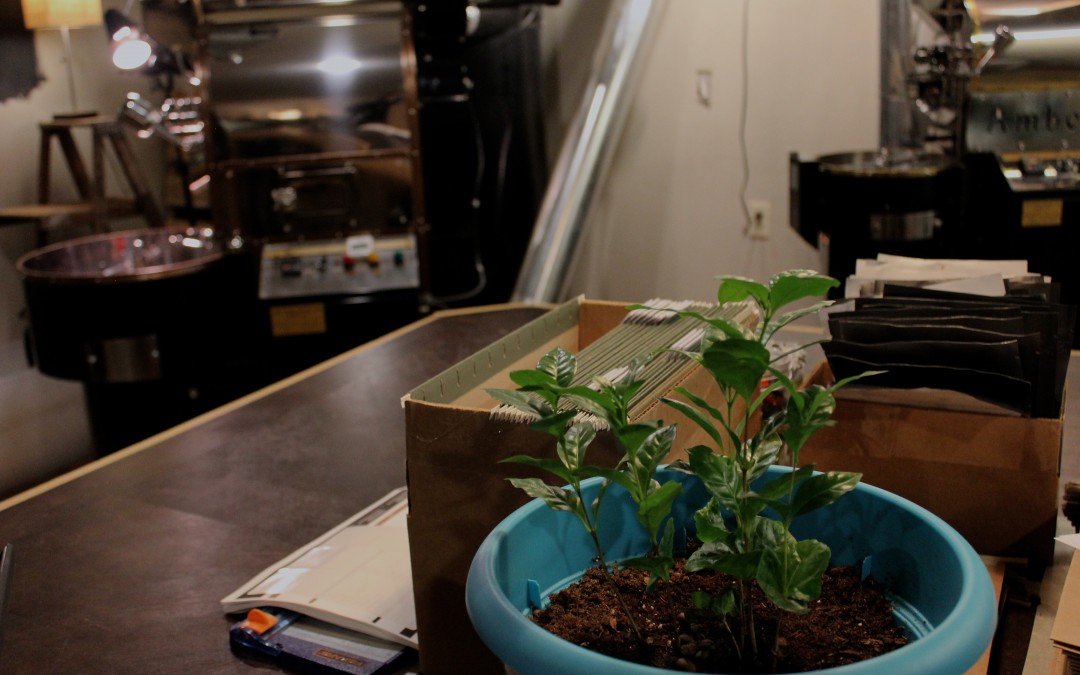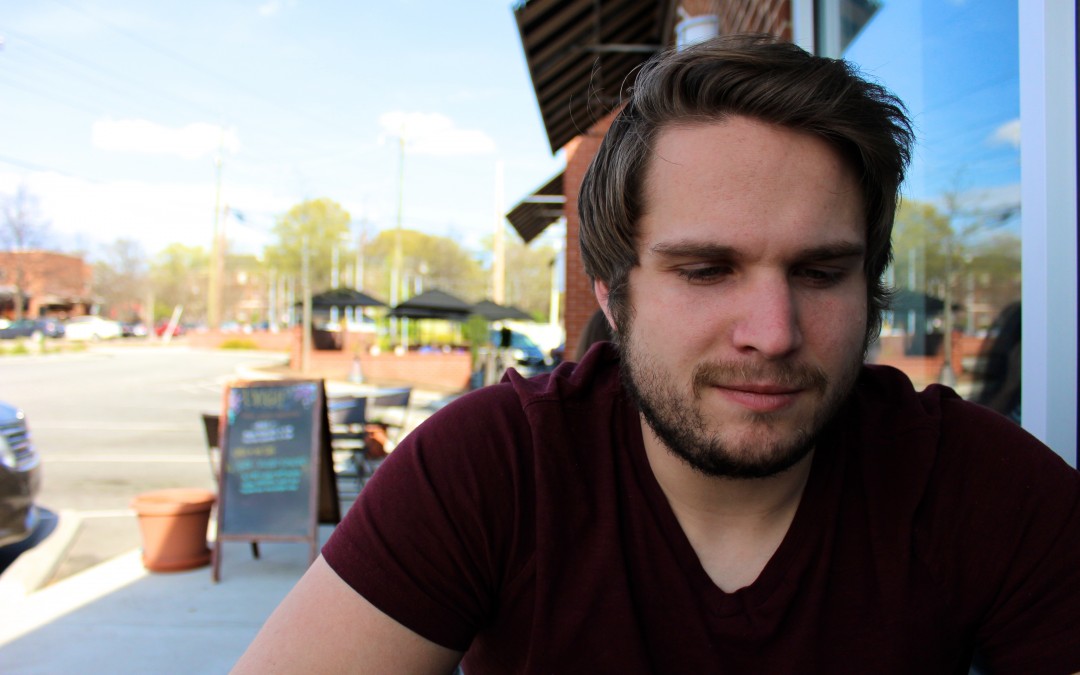by Joe Bland | Oct 26, 2017 | Uncategorized |
Back in 2016, I visited my first coffee farm in the rural mountains of Nicaragua. It was a one hour drive north of Matagalpa and most of the drive was on a dirt road rolling up and over hills and valleys. About halfway through, I convinced my host and coffee producer, Ben with Gold Mountain Coffee Growers, to let me ride in the back of the truck where I could get a panoramic view of the passing farmland and people who lived in the area. As the road narrowed to less and less gravel, Ben points up at a single power line. “We installed this a while back for Santos and his family. The additional profits he made on the better production of his coffee helped pay for power to his house.” Once we reached the farm and house, we were greeted immediately by the smiling face of Don Santos and his wife Teresa. Situated on their property was a simple wet mill, a green house, and their house. The farm itself produces about 5700 pounds of coffee a year and has been passed down through the family for generations. Santos’ farm offers a few different varietals of coffee. For this harvest season, he separated out a couple of them for us to experience and share. Both the Red and Yellow Catuai are the two varetials we decided to get in our roasters. Think of coffee shrub varietals like apples. Different types of apples taste and look different based on the genetics of the tree of which it is grown. There can be many other factors for flavors here...
by Joe Bland | Jul 28, 2015 | Uncategorized |
What is TDS? To make a great cup of coffee you not only want the best coffee beans available but also the best water. One of the most important aspects to look at when rating the quality of water is the TDS. TDS stands for Total Dissolved Solids. A TDS measurement represents the total concentration of dissolved substances in the water, which can include minerals, salts, and other solids (1). The amount and type of solids that are dissolved in the water will affect its flavor. Because coffee is about 96 percent water, the TDS of water used in the brewing process will greatly affect the quality of the finished product. TDS readings vary greatly between different kinds of water. Most distilled water has a TDS of 0 ppm (parts per million). During the distillation process steam is condensed from boiling water and the result is pure water with no dissolved solids. Spring water on the other hand has a relatively high TDS, which can range from 50 to 450 ppm (2). This is because the water picks up different minerals and salts on its journey through underground rock passages and cracks in the earth on its way to the spring. The result is water with a high level of dissolved solids. Tap water is somewhere in between these two. Ideal tap water ranges from 100-150 ppm while average tap water can range from 100-400 ppm (2). So what does this all have to do with coffee? The TDS of water not only can affect the initial flavor of a cup of coffee but it can also affect the...

by Clayton Johnson | Apr 22, 2015 | Uncategorized |
Welcome back. Little bit of a mash-up of our Tuesday and Friday post this week to help me during finals as well as feature our first interview for the blog. This week I was lucky enough to have a chance to sit down with Tim Morris, owner of Caffé Belleza, and discuss the Specialty Coffee Association of America’s annual “Event.” Tim has been in coffee 10 years and holds a Barista Guild of America level 1 certification. Since Caffé Belleza’s opening in November, 2013, he has mobilized specialty coffee in the Triangle. So we got a couple of Middle East Cold Brews from Cocoa Cinnamon (slow brewed iced coffee brewed with cardamom, rose petals and vanilla bean) and snagged a seat outside. A couple weeks ago, Tim found his way to Seattle for SCAA’s “Event” where coffee professionals all over the world convened. “Calling it “the Event,” is fair. For coffee professionals, there are so many dimensions of the industry and they’re all represented there,” said Tim. “For me, I just got to enjoy it.” Farmers, roasters, baristas, CEOs, equipment retailers, and enthusiasts just cover the broad spectrum. It’s where innovation and learning come to the forefront of the industry. If there’s something new and exciting, it’s at the Event. “It’s kind of this vibe where people are eager to see who’s got the next big thing, who’s got chops,” said Tim. It was the buzz around Seattle. Greetings were warm but the weather has built them tough in the northwest. Everyone wants to see what you’re made of. Fortunately, the battle for excellence never tasted so good. It...

by Clayton Johnson | Apr 17, 2015 | Uncategorized |
Today marks one week till I’m finished at UNC at Chapel Hill (excluding finals week). Feels like I’m already there. Wake up, open my laptop, check my emails, check twitter, grab more coffee. Questions raking through my brain. What am I supposed to be doing? Why am I not doing it? How is coffee not helping? What am I doing after college? I’m in the thick of it y’all (it’s okay because we’re in the south). Paper after paper, test after test. I’m in conversational french, but I don’t know a word that the instructor is saying. My motto: Nod your head, say “Oui,” write something in your notebook. French on no sleep is like coffee on empty stomach: not fun. Doesn’t stop me though, off to another coffee shop, maybe that’ll help. For those that keep up, little “full circle” as I sit in Open Eye Café drinking Carrboro Coffee’s Cup of Excellence: Rwanda (see our Rwanda write-up with Scott Conary). They set me up with a pour-over. First aroma is sweet, like a maple syrup, then follows with a floral note like lavender (disclaimer: I’m no seasoned professional). The drink is smooth and silky. Overall though, I’m not blown away. I don’t think its the coffee though, something just needs to spice it up (talking of a different brew method, please don’t add anything to this high-profile coffee). First thought: Bring in the AeroPress. This beautiful plastic syringe looks like its straight out of your thanksgiving kit. Overview: A very portable contraption that will save you time in the morning if you’re brewing your coffee manually....

by Clayton Johnson | Apr 14, 2015 | Uncategorized |
Welcome to post 7 of our weekly industry thread and second installment of “You’re Coffee Landscape!” (here’s part 1) In our last post of this mini-series, we talked about how coffee is the leading commodity from developing countries (including both Robusta and Arabica). We also worked through some of the big name brands of coffee such as Starbucks, Folgers, Maxwell House, and Keurig Green Mountain Inc. The main idea was looking at the political choice of what coffee you’re going to buy and who it supports. This week we keep that in mind but through a filter: Coffee Rust. The Pathogen is Hemileia vastatrix. The American Phytopathological Society discusses its importance saying it is, “the most economically important coffee disease in the world,” while “in monetary value, coffee is the most important agricultural product in international trade”. Coffee Rust is a fungus and form lesions on the leaves until it causes premature defoliation of the plant where it weakens the plant and hurts the current, and consequential yields of the tree (Coffee Rust). This fungus was first reported in 1861 and has since spread to every country it is produced in, hurting crop yields. The issue though is the current spike in the fungus due to climate change. National Public Radio reported that residents in Olpa, Guatemala, don’t think this issue will be solved easily. They reported that coffee rust in Guatemala now covers 70 percent of crops and has led to the loss of 100,000 jobs. In the report Francisco Anzueto, on the Guatemalan Coffee Board: Anacafe, said, “now that it’s hotter, the rust has spread to higher...

by Clayton Johnson | Apr 10, 2015 | Uncategorized |
Recently, in my Communication and Leadership class, we had to write a small essay for thisibelive.org. From their about section: “This I Believe, Inc., was founded in 2004 as an independent, not-for-profit organization that engages youth and adults from all walks of life in writing, sharing, and discussing brief essays about the core values that guide their daily lives.” Her only criteria was that it relates to leadership and start with a specific quote. She encouraged us to write about our personal lives and incorporate our passions. When I finished, I realized I wanted to share it with you, our blog readers. “The point is not to become a leader. The point is to become yourself, and to use yourself completely – all your gifts, skills and energies – to make your vision manifest. You must withhold nothing. You must, in sum, become the person you started out to be, and to enjoy the process of becoming.” Warren Bennis (2009), On Becoming a Leader. Basic Books As I read Bennis’ quote and prepare to graduate in May, I think of what will define me in this new period of my life. In thinking about my passion, and myself, I discovered a simple phase: I believe in making a good cup of coffee. It is ironic, right? A college education, professional experience, and it all surmounts into a 12-ounce cup (maybe even less). Yet, I think it represents a mantra for what the coffee industry should be about and a philosophy for a greater good. Let me explain why. I don’t see coffee as just as a diner cup or...




